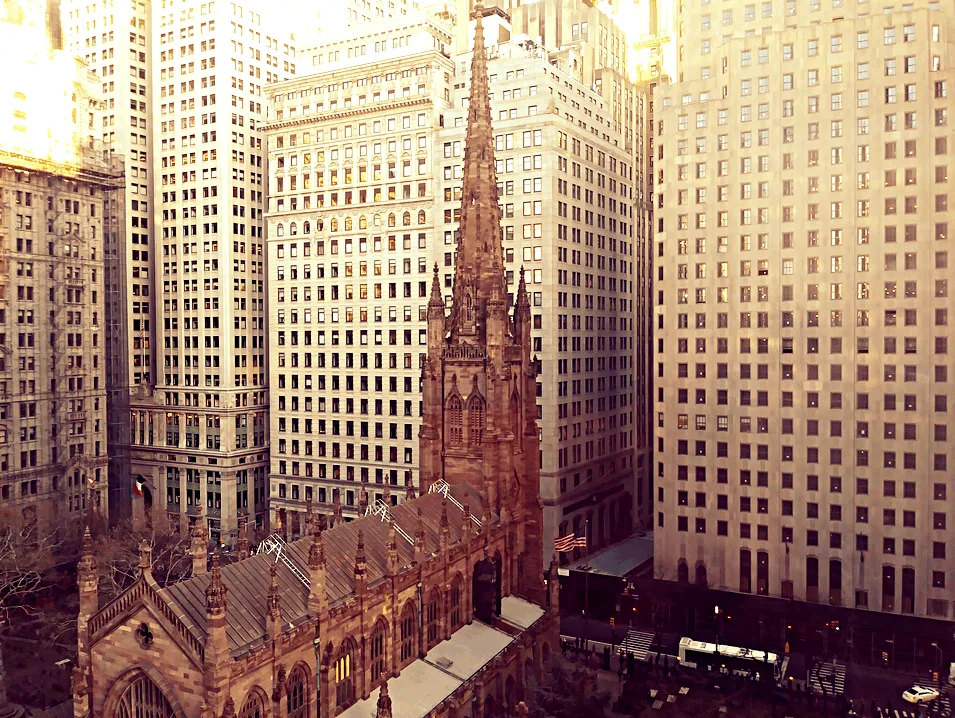This famous street has become a metonym for the financial markets in the United States.
In this post, you’ll discover the ultimate list of facts about Wall Street in New York City!
1. The street runs across 8 blocks in Lower Manhattan
Wall Street is a narrow street located in Lower Manhattan and runs all the way from Broadway in the west to the East River in the east.
Even though the street only runs across 8 blocks, it’s considered to be one of the most important streets in the world and literally represents the financial markets in the United States. As such, Wall Street is often used as a metonym to define the financial markets.

2. Wall Street got its name from the Dutch
One of the most fascinating facts about Wall Street is that there used to be an actual wall on the location which formed the border of the city. This wall was built by the Dutch in the 17th century to create protection for the newly formed “New Amsterdam” settlement, which is how New York was referred to back then.
The original wall, which was built to protect the Dutch settlers against Native Americans, pirates, and the British, was originally merely a wooden palisade of about 9 feet (2.7 meters) tall and 2,340 feet (710 meters) long.
Whether or not the street was actually named after the wall is uncertain. The Dutch gave the name so it perhaps makes more sense that the “Waalstraat” was named the 30 Walloon families, now the southern part of Belgium and “Waal” means “Walloon” in Dutch, who embarked on the first ship “Nieu Nederlands” in 1624. The man who bought Manhattan for the Dutch was also a Walloon named “Peter Minuit.”
Whether or not the street was named after the wall or the Walloons who inhabited New Amsterdam early on remains unclear until today.

3. It became a slave market in the early 18th century
A few decades later, around halfway through the 17th century, the original wooden wall was replaced by a stone fortification. This wall was commissioned by Peter Stuyvesant, the director-general of New Netherland.

Even though slavery was pretty common in the colony throughout the 17th century and the new wall was even built by slaves, the slave market wasn’t official until December 13, 1711.
This slave market was operational on the corner of Wall and Pearl Streets from 1711 to 1762 and the city did well because of it as they charged taxes for every slave that was bought or rented on the market.
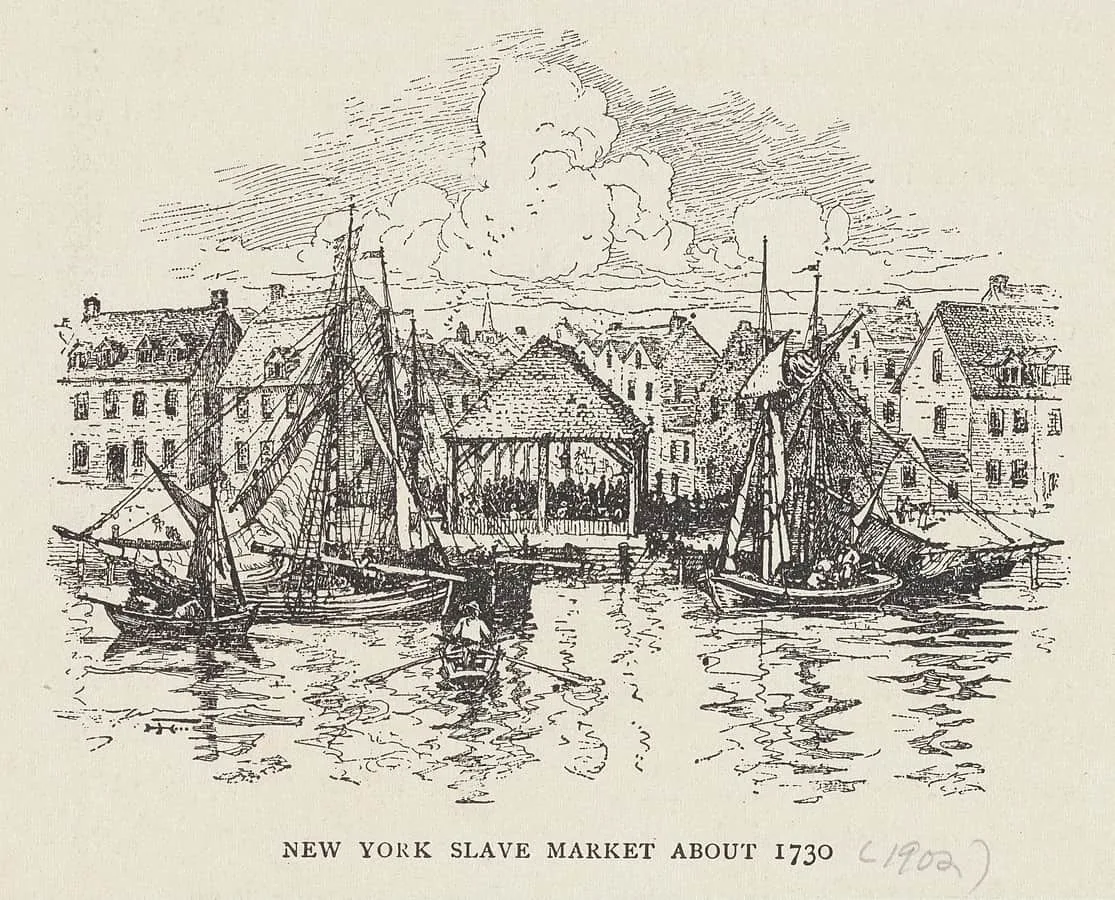
4. The first Presidential inauguration happened here
Two mighty important moments in the history of the United States happened on Wall Street. The first presidential inauguration happened on the balcony of Federal Hall on April 30, 1789. On this day, George Washington took the oath of office.
One year earlier, the Bill of Rights which consists of the first 10 amendments to the United States Constitution, was passed here as well.
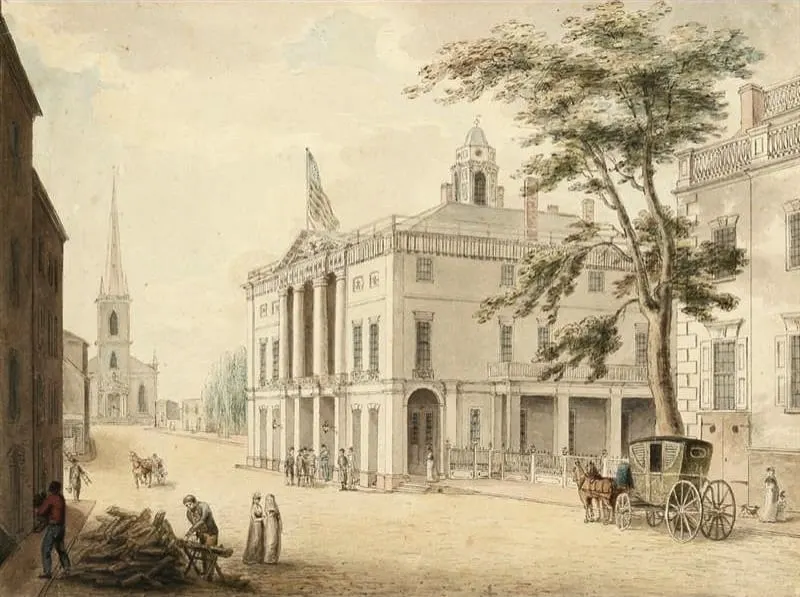
5. The New Federal Hall Building Commemorates important moments
The original building was demolished in 1812 and the current Federal Hall Building on Wall Street was completed in 1842. It was built in the Greek Revival architectural style and is one of the best-preserved landmarks in this style in the city.
It was originally built as the U.S. Customs House for the Port of New York and served as a sub-treasury building. It’s now a National Memorial that commemorates some of the most important moments in American history that happened at the location.
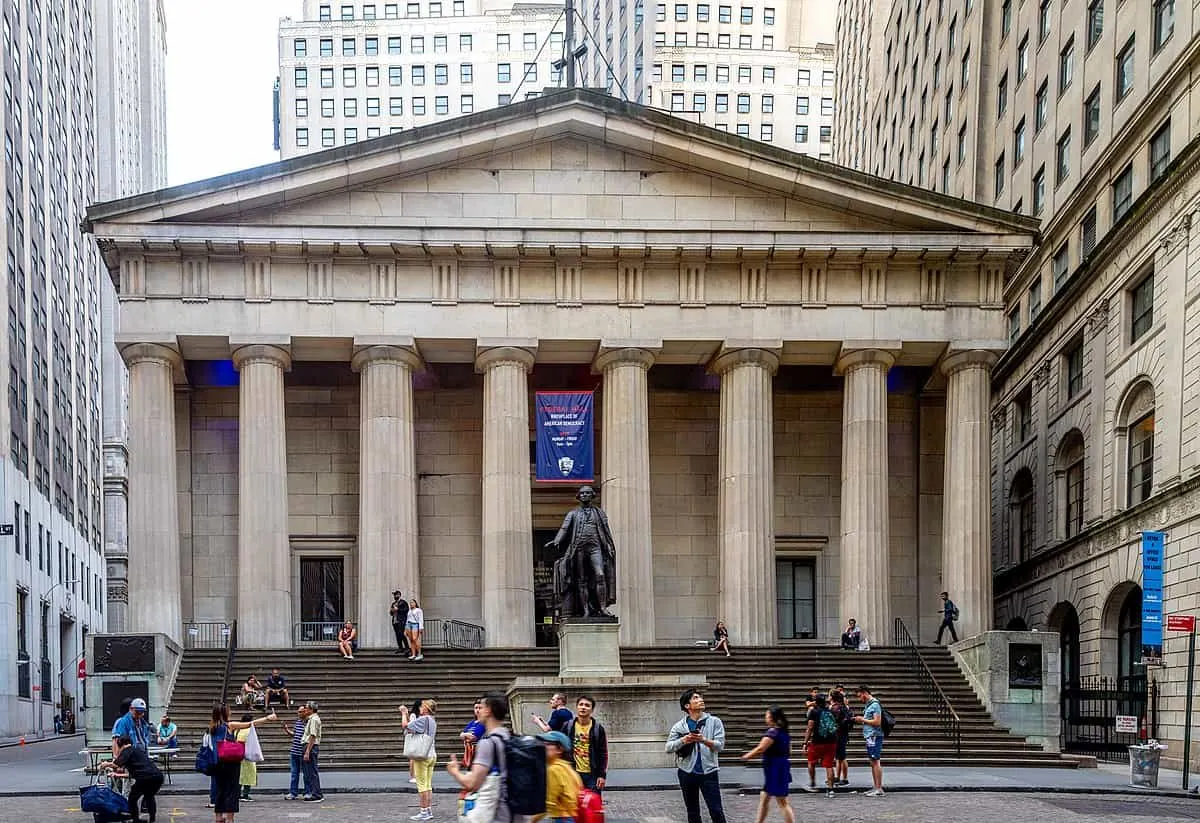
6. The first version of the New York Stock Exchange was formed in 1792
Wall Street became an important gathering place for traders and investors to deal in securities in the 18th century. They used to do this under a buttonwood tree that was located in the area.
The first version of the New York Stock Exchange was formed in the year 1792 and was fittingly referred to as the “Buttonwood Agreement.” It already had a commission-based structure and was meant to make trading structured and fair.
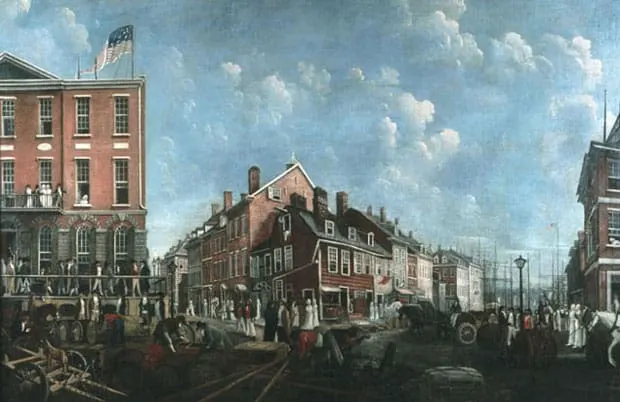
7. Business boomed in the early 19th century because of a canal
One of the most important structures in the history of New York is the Erie Canal. This canal runs for 363 miles (584 kilometers) all the way from the Hudson River in Albany to Lake Erie in Buffalo.
It also connects the Atlantic Ocean with the Great Lakes area and by the time it was completed in the year 1825, New York was the only port on the east coast that had this connection.
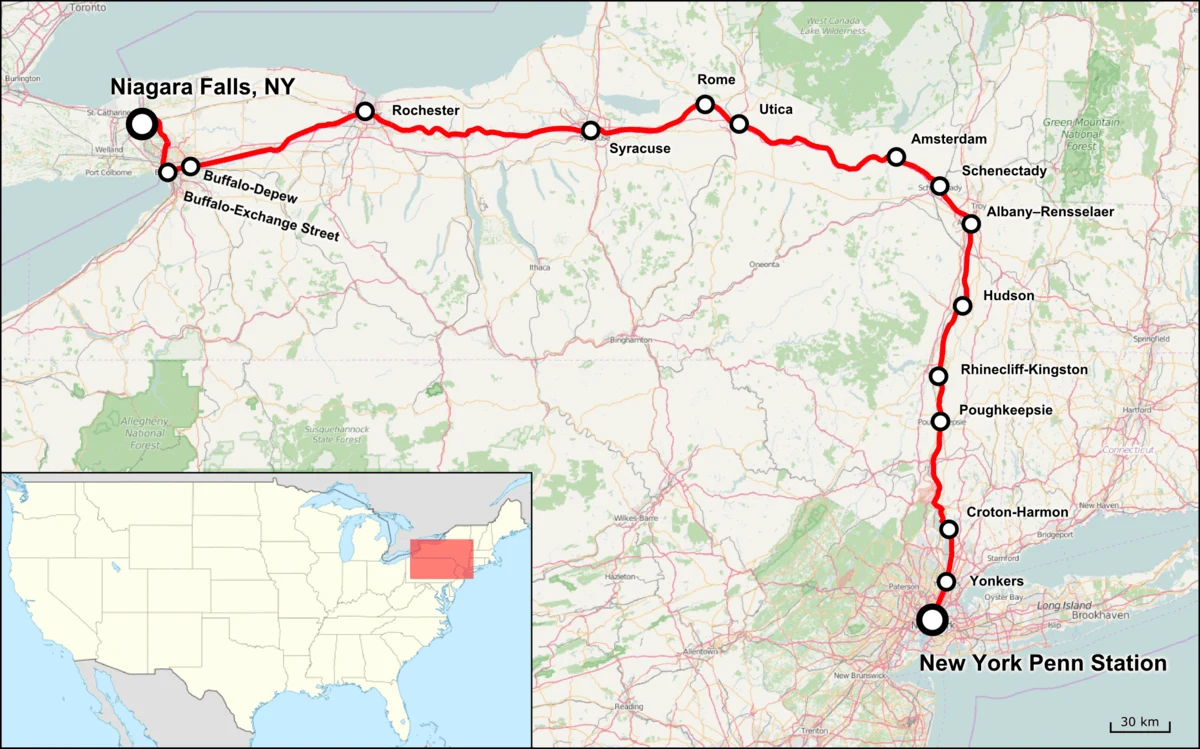
8. There was only 1 larger financial center in the world in the 19th century
The opening of the Erie Canal resulted in New York’s businesses booming and the city became the “money capital of America,” with Wall Street as its undisputed center.
In the second half of the 19th century, agriculture was replaced by heavy industry and the financial markets became more and more important.
One of the most amazing facts about Wall Street is that it easily held its position during this period and became the second-largest financial center in the world, with only London being bigger at the time!
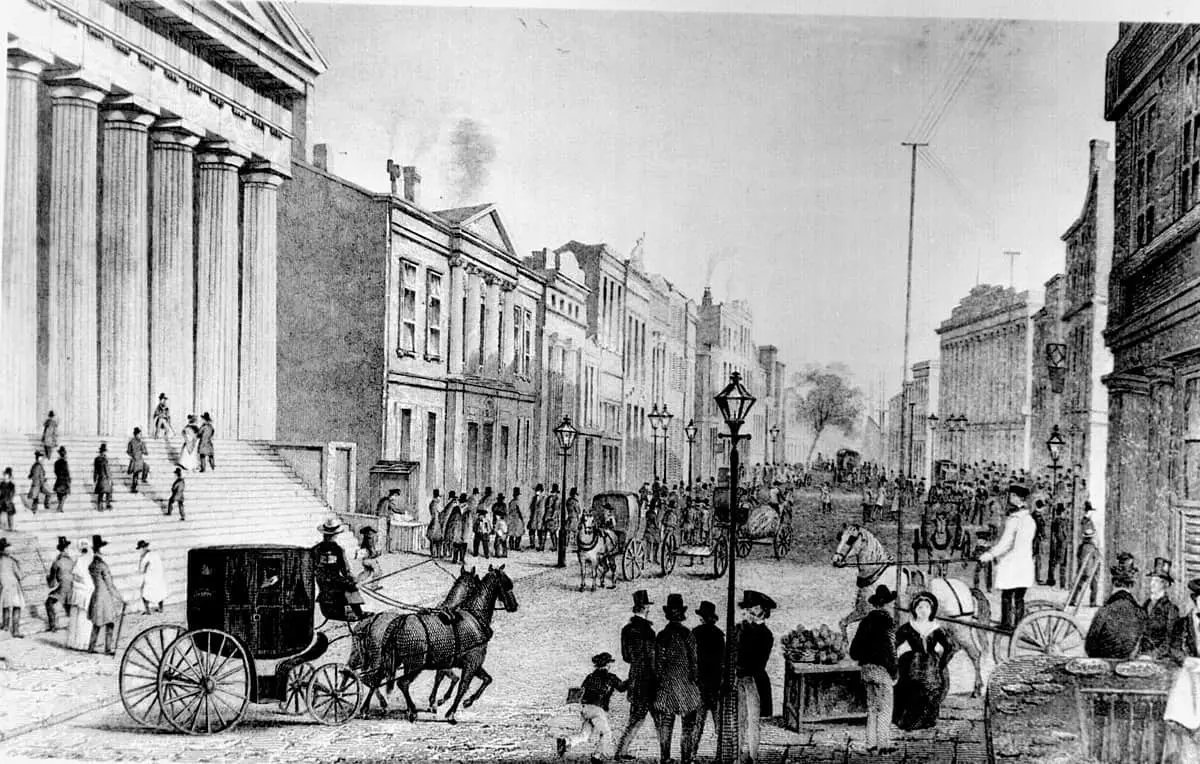
9. The most important number on Wall Street was created in 1884
In the late 19th century, the New York Stock Exchange required a better way to measure the performance of the stocks that were trading there. In 1884, Charles Dow (1851-1902) came up with a tracking system and initially started tracking just 11 stocks.
He also coined the terms “bull market,” when stocks gradually went up, and “bear market,” when stocks went down. The number is still used and now measures the performance of the 30 biggest stocks on the exchange.
Charles Dow was the co-founder of “Dow Jones & Company” and the “Wall Street Journal,” which remains one of the most respected financial publishers in the world until today!
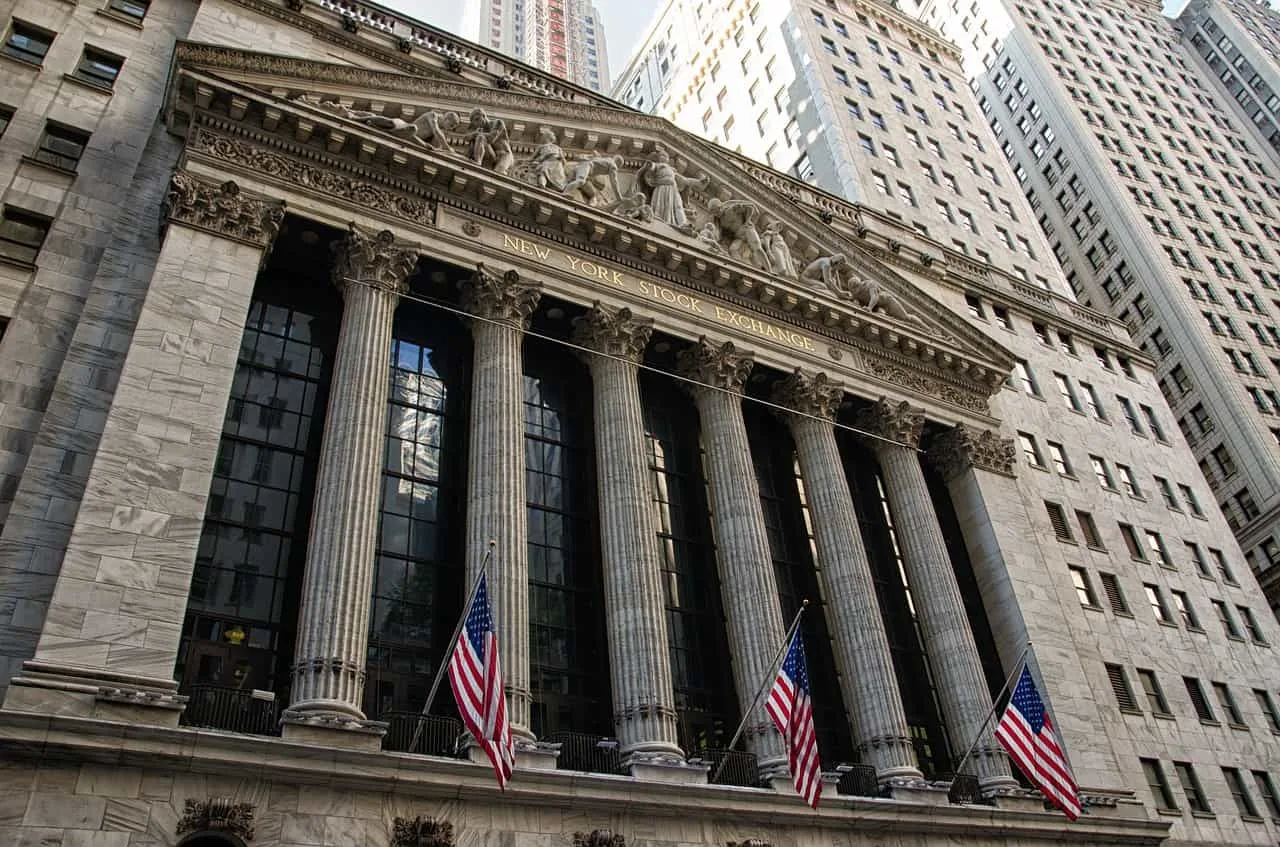
10. It was the scene of a horrible act of terrorism in 1920
Wall Street became one of the busiest places in the city in the early 20th century. It retained its status as one of the most important financial centers in the world and thousands of people worked in the financial district.
On September 16, 1920, a powerful bomb exploded on one of the busiest corners in the area, killing 38 people and seriously injuring 143 more. The incident is now referred to as the “Wall Street Bombing” and the perpetrators have never been caught.
This incident fueled a period referred to as the “Red Scare,” a time in which people feared a potential rise of communism. This had already started in the United States shortly after World War I.
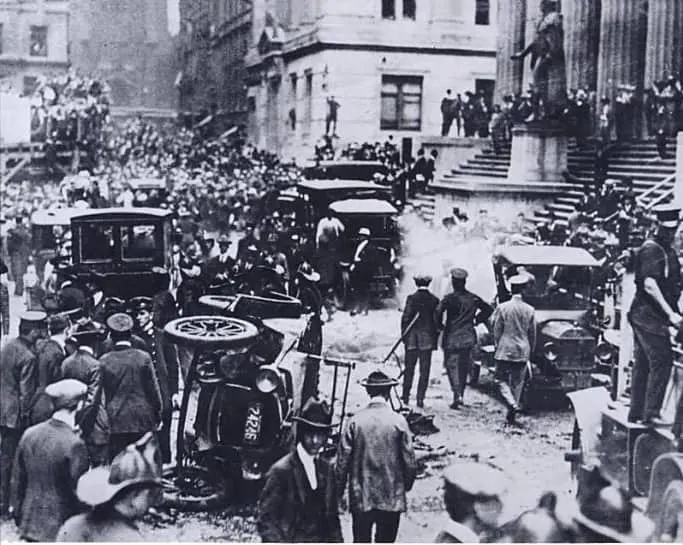
11. The stock market crashed in October 1929
The most infamous moment in Wall Street’s history was the stock market crash of 1929. This happened in October of that year shortly after the stock market had reached its all-time high.
It started on October 3, 1929, and by October 24, the market completely collapsed. This event became the prelude to the Great Depression which left a quarter of all working people without a job and is considered to be one of the most severe financial crises in American history.
One of the most intriguing facts about Wall Street is that the decade between the Wall Street Bombing and the Wall Street stock market crash of 1929 is referred to as the “Roaring Twenties,” a period of great innovation and prosperity!
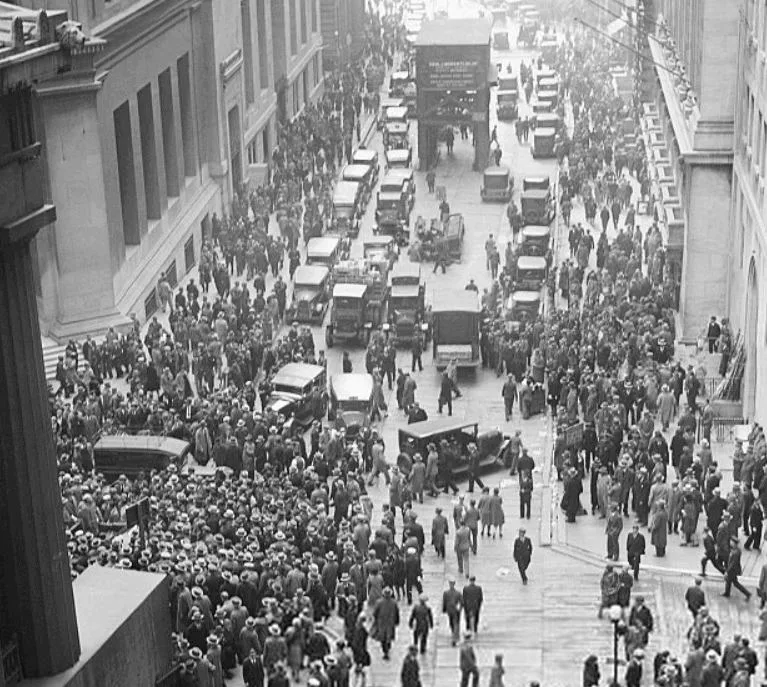
12. A church on Wall Street was once the tallest building in the United States
One of the most amazing churches in New York City is located on Wall Street and is referred to as the “Trinity Church.” The original church was founded in 1698 but was destroyed in the Great New York City Fire of 1776.
The second church on the location was much larger and stood 200 feet (60 meters) tall but was demolished when it became severely weakened because of heavy snowfall in 1839.
The current church was built between 1839 and 1846 in the Gothic Revival architectural style and stands 281 feet (86 meters) tall. This made it the tallest building in the United States until 1869 and the tallest building in New York City until 1890!
